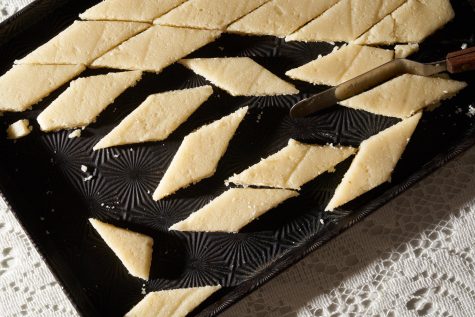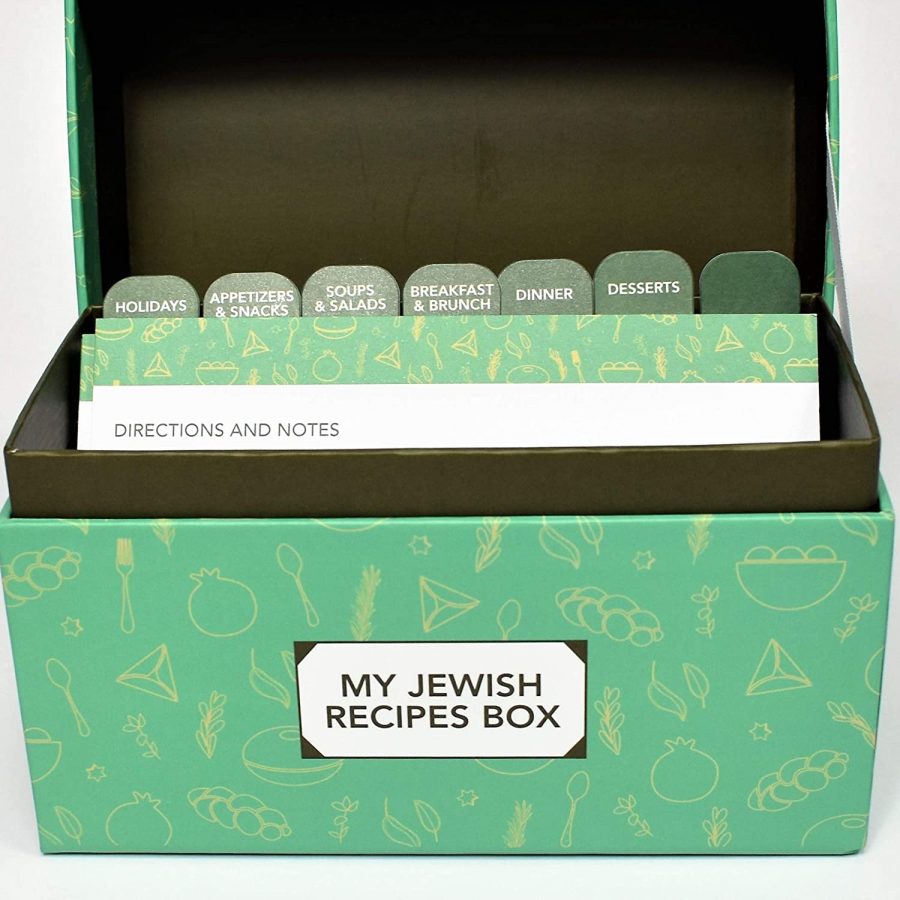My Jewish Recipe Box: Marzipan
Published June 24, 2021
This story originally appeared in the Jewish Food Society.
This recipe produces a marzipan that has a unique aromatic flavor different than most marzipans. It is earthy and a bit woodsy, courtesy of the family’s secret ingredient: mastic. This resin can be purchased online.
Makes: ~150 pieces
Time: 1 hour + 30 minutes drying time
ADVERTISEMENT
Ingredients
3 cups raw almonds
3 cups sugar
2 ½ cups water
4-5 mastic tears, ground with 1 teaspoon sugar in mortar and pestle
Juice from 1 lemon
Preparation
1. Prepare the almonds: Place almonds in a large heat-proof bowl and cover with boiling water. Let stand for 5-10 minutes, then drain and cover again with cold water. Gently squeeze each almond between your fingers to remove the skin. Spread on a baking sheet and allow to dry, about 30 minutes.
2. Place the sugar and water in a large stockpot and bring to a boil over medium-high heat. Boil for 12-15 minutes until the sugar is fully dissolved and the mixture reaches a syrupy consistency. The syrup should feel tacky and a short thread should form between your wetted finger and thumb when pulled apart. If you have a candy thermometer, the temperature that you are looking for is 232°F.
3. Meanwhile, place the almonds in the bowl of a food processor and process on high for 60-90 seconds to form a fine, sand-like almond meal. Be careful not to over process.
4. Remove from the heat and carefully add the ground almonds to the hot sugar syrup mixture, stirring constantly with a wooden spoon until well combined, about 1 minute. Add the mastic and lemon juice and mix to combine.
ADVERTISEMENT
5. Return the pot to medium-low heat and continue mixing vigorously and constantly until the paste begins to pull away from the sides of the pan, about 5-10 minutes. It is very easy to scorch the mixture at this point, so no matter what, do not stop stirring (you may want to call in a helper to trade off!).
6. Remove from the heat and immediately transfer to the bowl of a stand mixer fit with the paddle attachment. Mix on medium speed for about 2-3 minutes until a dough begins to form. Let the dough rest until cool enough to handle (it will continue to thicken). If for some reason your dough crumbles when you put it in the mixer, add a couple drops of water at a time to rehydrate to a dough-like consistency.
7. Place a piece of parchment paper (about 15 inches long) on a clean work surface. Transfer the dough to the parchment paper and form into a round, flat disc shape. Cover with another piece of parchment paper and roll out into a 15 inch diameter circle about a ¼ inch thick. If for any reason the dough is too soft to cut or hold you can roll it into small balls instead.
8. Cut into 1 inch diamond diamond shapes. Using a spatula, carefully transfer the pieces to small gift boxes or an airtight storage container placing parchment paper in between any layers. Will keep in the fridge for up to two weeks.
Make Ahead: The almonds can be peeled the night before and stored in a dry airtight container.
The Recipe’s Story

Karni Einat remembers her grandmother Leah’s table in Jerusalem clearly from when she was little. During each holiday, a different family recipe graced the table. The morning after Passover seder, it was kubebas, fried meat patties bound with matzo meal; for Shavuot, it was a challah braided to look like Jacob’s ladder. And, for Yom Kippur, the family broke the fast with pipitada, a sweet drink made with melon seeds that her grandfather Ya’akov, a tinsmith in the old city of Jerusalem, collected during the summer.
Of all of Leah’s recipes and culinary traditions, her marzipan — pronounced masapan in the family, which uses the Ladino name for the dish — stands out. Made with mastic, a tree resin, the recipe has a note of pine, and a flavor unlike most marzipan. Leah, who had impaired vision, made the recipe with the help of Ya’akov for special occasions including birthdays or the birth of a new family member. Using cookie cutters, she carved the marzipan into various shapes and then placed the pieces into small boxes, one for each family member. Karni recalls she would eat it as slowly as possible, making the treat last as long as she could.
Karni isn’t sure where the recipe originally came from. Her family has been in Israel for 13 generations. But, with roots in Spain, which has a longstanding marzipan tradition, it’s possible that the recipe worked its way down many generations.

Karni and David at their wedding with Ya’akov and Leah, 1969.
Karni learned the recipe when she was an adult. She asked Leah to share the recipe with her along with two other recipes she loved, the Passover kubebas and her grandmother’s cookies. “I didn’t want [the marzipan] to vanish when she was gone,” she explains. When we asked Karni if her grandmother shared the recipe over the phone, she explained that her grandparents didn’t have a telephone in their home. She was of a generation that cooked with a kerosene stove and clay pots. Instead, she dictated the recipe to Karni as the two sat together, with the help of Ya’akov.
The recipe has remained relatively unchanged since Karni inherited it and brought it with her to her home outside of Tel Aviv in a town called Kefar Saba. The ingredients remain the same, but the technique has been updated with the advent of a food processor, which makes grinding the almonds easier than Leah’s method of using a meat grinder, and a mixer which has replaced Ya’akov’s wooden spoon that was used to knead the dough.
Today, Karni is the only person in the family to make the recipe, though it’s enjoyed by everyone. She makes it for her husband David’s birthday, following her grandmother’s tradition of sharing it with the family in small boxes — with a large box for David.

















